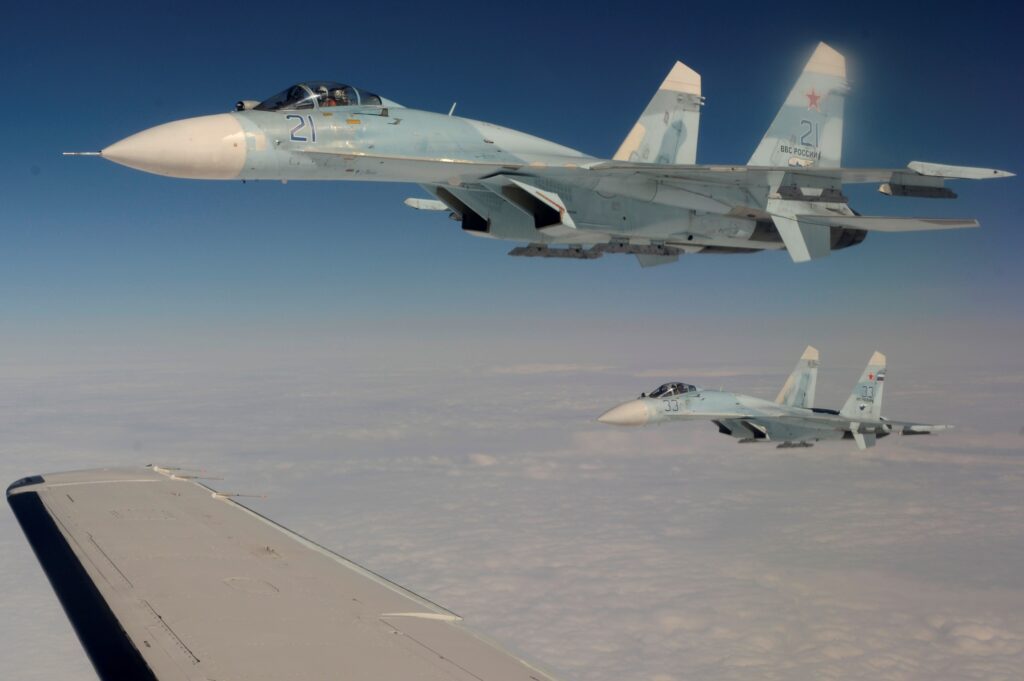The United States Air Force accused Russian pilots of colliding and bringing down an MQ-9 Reaper drone patrolling above international waters.
What happened?
On March 14, 2023, a patrol of two Russian Su-27 Flankers intercepted a USAF MQ-9 Reaper drone conducting an intelligence, surveillance, and reconnaissance (ISR) mission within international airspace over the Black Sea.
According to the US European Command, the two fighters attempted to hinder the operation of the drone by flying in front of it and dumping fuel over it. One of the Su-27s eventually struck the propeller of the MQ-9, which crashed into international waters.
“In fact, this unsafe and unprofessional act by the Russians nearly caused both aircraft to crash,” USAF General James B. Hecker, commander of the US Air Forces Europe and Air Forces Africa, said in a statement. “U.S. and Allied aircraft will continue to operate in international airspace and we call on the Russians to conduct themselves professionally and safely.”
The Russian Ministry of Defense stated that the fighters did not come into contact with the MQ-9, did not use airborne weapons, and returned safely to their home base.
According to Russian communication recordings shared by Olga Honcharenko, the Russian Navy Black Sea fleet conducted rescue operations in the area, presumably recovering debris from the Reaper. A US Navy P-8A Poseidon maritime patrol aircraft was also sent above the crash area.
Accident or escalation?
Antagonistic interactions between Russian pilots and western armed forces are common ground. In November 2022, a Russian Su-27 fighter fired a missile near a Royal Air Force RC-135 observation plane on patrol over the Black Sea. At the time, Russian authorities said the missile release was the result of a “technical malfunction”.
However, the destruction of an asset is rather unusual. This raises the question of whether the collision was intentional. If the goal was indeed to bring down the drone, a volley of the Flanker’s 30mm GSh-30-1 autocannon would have been sufficient, without risking the integrity of the fighter.
Instead, an anonymous US military source that saw footage of the interaction told PBS journalist Nick Schifrin that the Russian pilot might have accidentally hit the propeller while trying to change the course of the drone.
Washington summoned the Russian ambassador to Washington, Anatoly Antonov, to the State Department to discuss “unsafe and unprofessional operations over the Black Sea.” Antonov, in return, described the incident as a “provocation” by the United States, according to RIA Novosti.

